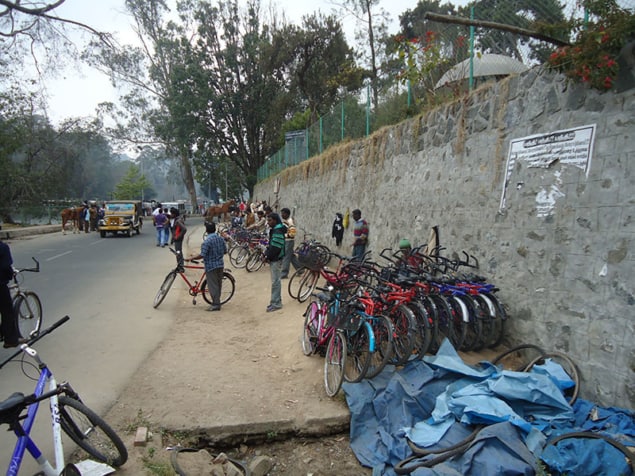
Cycling and other non-motorized transport could help India simultaneously reduce greenhouse-gas emissions and improve public health.
That’s the conclusion of researchers in Germany and Austria, who analyzed Indian household survey data to understand the trade-offs associated with energy usage in a country experiencing rapid urbanization.
Non-motorized transport presents an attractive “sweet spot” for development, whilst other policies, such as improving access to modern cooking fuels, could dramatically lower morbidity while increasing emissions only moderately, the team showed.
“Not all energy use is equal,” said Felix Creutzig of the Mercator Research Institute on Global Commons and Climate Change (MCC) in Germany. “For sustainable pub-lic-health development, the provision of one type of energy, namely electricity, is more important than another, namely gasoline for cars.”
India is expected to double its urban population within the next generation, from 410 million today to more than 800 million in 2050. In principle, this urbanization could improve well-being, by giving access to better infrastructure and living conditions. The reality, however, is that a large portion of India’s urban dwellers are living in slums, with a high risk of health problems.
Creutzig and his colleague Sohail Ahmad at the MCC, and Shonali Pachauri at the International Institute for Applied Systems Analysis, Austria, believe that India’s public policies need to come up to speed. Although previous studies have explored the health burdens of specific transport and energy policies, they only did so at a popula-tion level, which masks smaller, heterogeneous trends, Creutzig and colleagues say.
To look at the issue more closely, the researchers turned to the “micro data” contained in two rounds of India’s longitudinal household surveys, from 2005 and 2012. The data allowed them to explore energy expenditure and use at a household level, and health at an individual level, while controlling for other factors such as income, urbanization and living conditions.
One finding was that a blunt tax on electricity usage – with the aim, for example, of reducing emissions – would be unduly detrimental to public health, by turning poorer people away from modern heating and cooking methods. On the other hand, higher taxes on gasoline could benefit both public health and the climate, especially if the taxes were used to fund clean mass transit.
Such a policy would tie in with the encouragement of cycling, the researchers’ claimed sweet spot. According to the analysis, a 10% increase in cycling could lower diabetes, cardio-vascular diseases and other health issues for 0.29 million people while also abating emissions by 1.5 kilotonnes of carbon dioxide equivalent annually.
In addition, a 10% increase in urbanization, and a concurrent improvement in access to modern cooking and clean water, could increase electricity-related emissions by 84 kilotonnes of carbon dioxide equivalent annually, but lower short-term morbidity for 2.4 million people.
“When starting from very low levels of energy use, access to certain basic energy services – electric and clean cooking – is essential for improving public health and well-being,” said Pachauri. “Greater discretionary energy use associated with personal motorized automobiles fuelled by gasoline and diesel, however, can have adverse implications for health and emissions.”
The team published the findings in Environmental Research Letters (ERL) .



